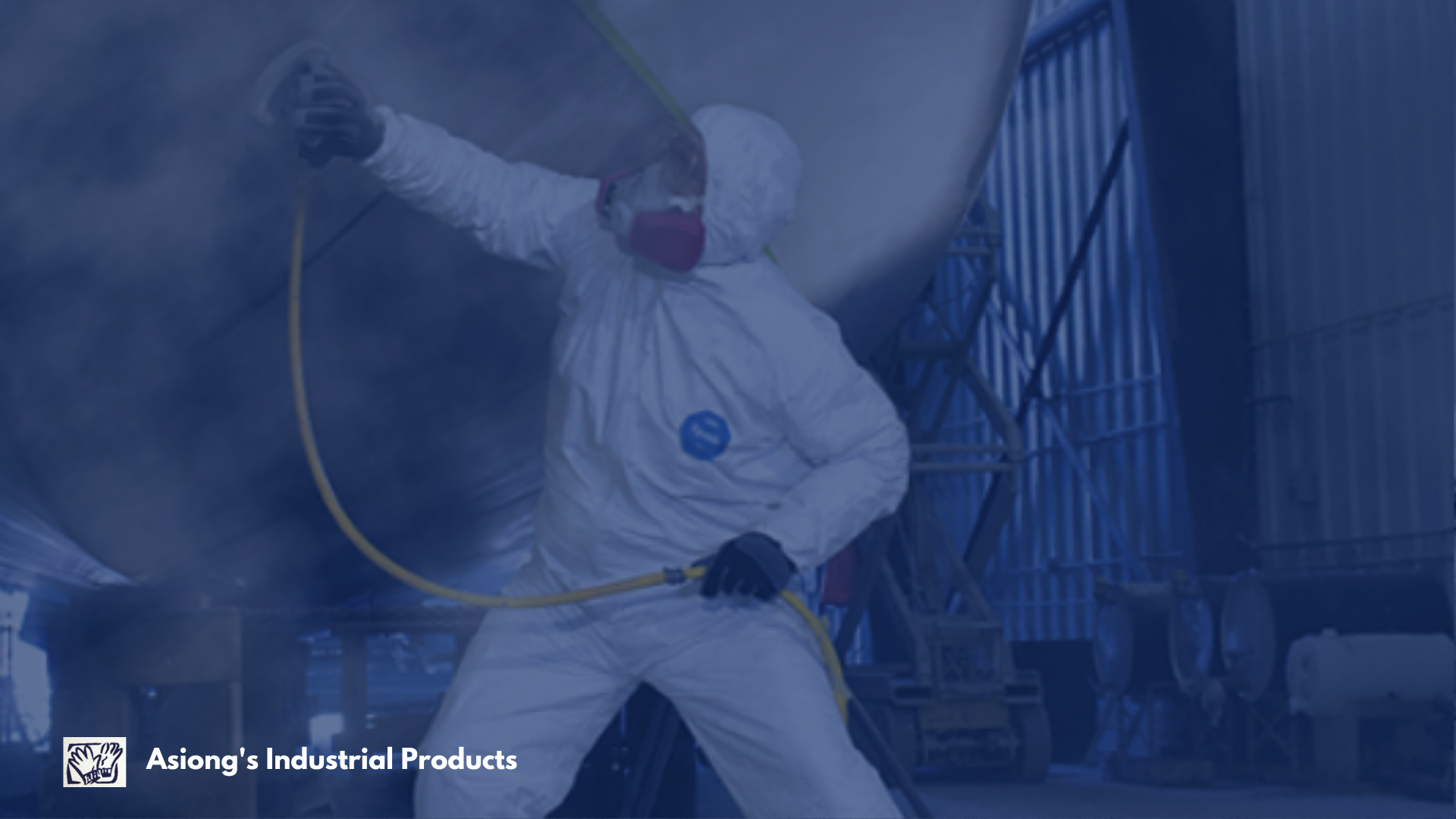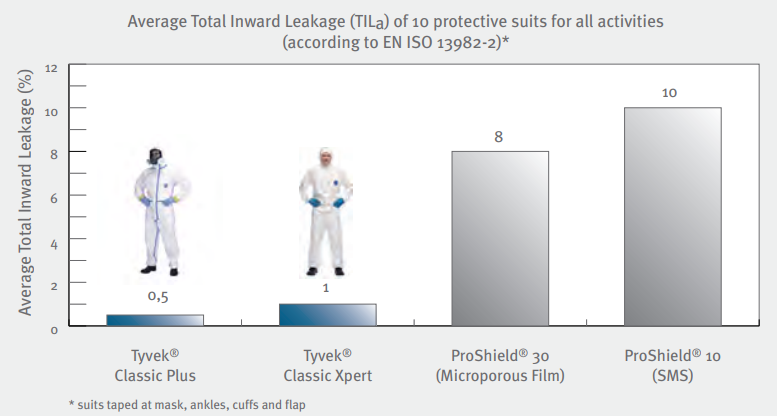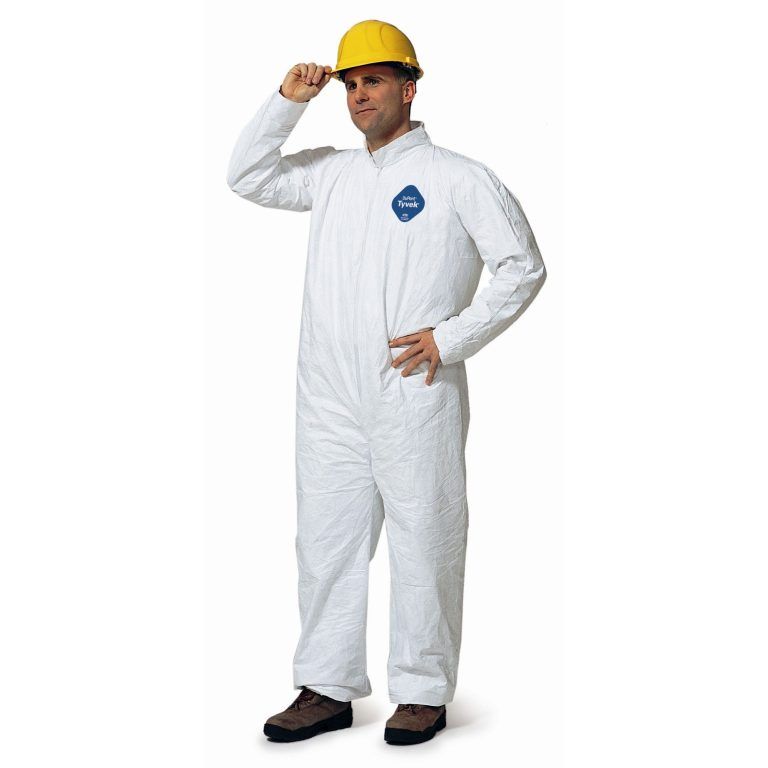
Handling Asbestos with Tyvek® Coveralls
2022-10-25T08:04:49.433ZRISK SHEET: ASBESTOS – A NATURAL FIBER
Asbestos is a material with numerous qualities which was used on a massive scale before being shown to be highly toxic. However, it can still be found in many buildings and machines. Helping to keep workers in such environments safe, protective coveralls made of DuPont™ Tyvek ®can provide durable, comfortable and robust protection against asbestos fibers.
Understanding the dangers of asbestos
Asbestos is the common name for several naturally occurring fibrous silicate minerals. Asbestos fibers are very heat resistant and strong and were used for many years in thermal insulating materials such as leggings and coatings, floor tiles, roofing, asbestos cement products, electrical insulating materials as well as vehicle clutch and brake linings.
Since asbestos is a very friable material, microscopic fibers can release into the air in smaller or larger quantities. Inhalation of asbestos fibers can have serious health effects, including asbestosis, lung cancer, and mesothelioma.
The Nordic countries banned asbestos between 1970 and 1980. The UK, Germany, and France followed in the 1990s. Directive 1999/77/EC of the European Union bans all types of utilization of asbestos from 1st January 2005 in all of its 27 member states. However, asbestos is still present in many buildings and other structures. Building maintenance workers are at a high risk of coming into contact with the fibers when working on insulation in buildings and industrial installations such as pipes, roofs, walls, etc.
Minimizing the risk when working with asbestos
The European Council Directive 83/447/EEC on the protection of workers from the risks related to exposure to asbestos at work and its amendments, deals specifically with protecting workers from the risks related to exposure to asbestos at work.
Before any work is done, a comprehensive risk assessment has to be carried out and preventive measures have to be established. Employers have to provide the necessary organization of work, appropriate equipment (including suitable personal protective equipment), safe systems of work, training, information, and supervision. Suitable personal protective equipment in general includes respiratory equipment, coverall, gloves, and safety boots.
Choosing appropriate protective clothing
In order to avoid cross contamination, i.e. asbestos fibers attached to a person’s skin or underwear are carried to uncontaminated places, released and then inhaled, protective coveralls must provide a high barrier against air-borne particles (Category III, Type 5). They have to meet the following general requirements:
 *EN 1073-2 measures the inward leakage of particles into the whole suit. The result is then expressed as the Nominal Protection Factor (NPF) of a garment. Tyvek® Classic Plus and Tyvek® Classic Xpert meet the requirements of Class 2 (NPF > 50), whereas most other Type 5 protective suits are only Class 1 (see table below).
Thanks to the unique non-woven structure of Tyvek®, which forms a durable barrier against and many water-based inorganic chemicals, barrier performance will remain intact even if the outer layers become abraded in places. With MPF, the protective outer layer is easily damaged by abrasion, whereas the more open structure of SMS allows more particles to penetrate the garment.
Beyond its high abrasion and tear resistance, Tyvek® is also lightweight as well as permeable to both air and water vapor, providing a high level of wear comfort. Thanks to its smooth surface and antistatic treatment, Tyvek® prevents particles from adhering to the coverall.
DuPontTM Tyvek® Classic Xpert, model CHF5
*EN 1073-2 measures the inward leakage of particles into the whole suit. The result is then expressed as the Nominal Protection Factor (NPF) of a garment. Tyvek® Classic Plus and Tyvek® Classic Xpert meet the requirements of Class 2 (NPF > 50), whereas most other Type 5 protective suits are only Class 1 (see table below).
Thanks to the unique non-woven structure of Tyvek®, which forms a durable barrier against and many water-based inorganic chemicals, barrier performance will remain intact even if the outer layers become abraded in places. With MPF, the protective outer layer is easily damaged by abrasion, whereas the more open structure of SMS allows more particles to penetrate the garment.
Beyond its high abrasion and tear resistance, Tyvek® is also lightweight as well as permeable to both air and water vapor, providing a high level of wear comfort. Thanks to its smooth surface and antistatic treatment, Tyvek® prevents particles from adhering to the coverall.
DuPontTM Tyvek® Classic Xpert, model CHF5

- High particle barrier (material, seams)
- Smooth surface to prevent from adhering to the garment
- Tight fit at arm and leg openings (elasticated cuffs and ankles)
- Compatible with additional PPE (masks, goggles, gloves)
- Comfortable to wear, high freedom of movement
 *EN 1073-2 measures the inward leakage of particles into the whole suit. The result is then expressed as the Nominal Protection Factor (NPF) of a garment. Tyvek® Classic Plus and Tyvek® Classic Xpert meet the requirements of Class 2 (NPF > 50), whereas most other Type 5 protective suits are only Class 1 (see table below).
Thanks to the unique non-woven structure of Tyvek®, which forms a durable barrier against and many water-based inorganic chemicals, barrier performance will remain intact even if the outer layers become abraded in places. With MPF, the protective outer layer is easily damaged by abrasion, whereas the more open structure of SMS allows more particles to penetrate the garment.
Beyond its high abrasion and tear resistance, Tyvek® is also lightweight as well as permeable to both air and water vapor, providing a high level of wear comfort. Thanks to its smooth surface and antistatic treatment, Tyvek® prevents particles from adhering to the coverall.
DuPontTM Tyvek® Classic Xpert, model CHF5
*EN 1073-2 measures the inward leakage of particles into the whole suit. The result is then expressed as the Nominal Protection Factor (NPF) of a garment. Tyvek® Classic Plus and Tyvek® Classic Xpert meet the requirements of Class 2 (NPF > 50), whereas most other Type 5 protective suits are only Class 1 (see table below).
Thanks to the unique non-woven structure of Tyvek®, which forms a durable barrier against and many water-based inorganic chemicals, barrier performance will remain intact even if the outer layers become abraded in places. With MPF, the protective outer layer is easily damaged by abrasion, whereas the more open structure of SMS allows more particles to penetrate the garment.
Beyond its high abrasion and tear resistance, Tyvek® is also lightweight as well as permeable to both air and water vapor, providing a high level of wear comfort. Thanks to its smooth surface and antistatic treatment, Tyvek® prevents particles from adhering to the coverall.
DuPontTM Tyvek® Classic Xpert, model CHF5
- Hooded limited-life chemical protection suit, Category III, Type 5-B and 6-B.
- Design and construction provides high protection against particles
- Sleeve design prevents sleeves from riding up when working overhead
- Optimized 3-piece hood design for tight fit around the face
- Elasticated face, wrists and ankles for tight fit
- Tyvek zipper with flap for enhanced protection
- Overall ergonomic shape for perfect fit and protection when moving
